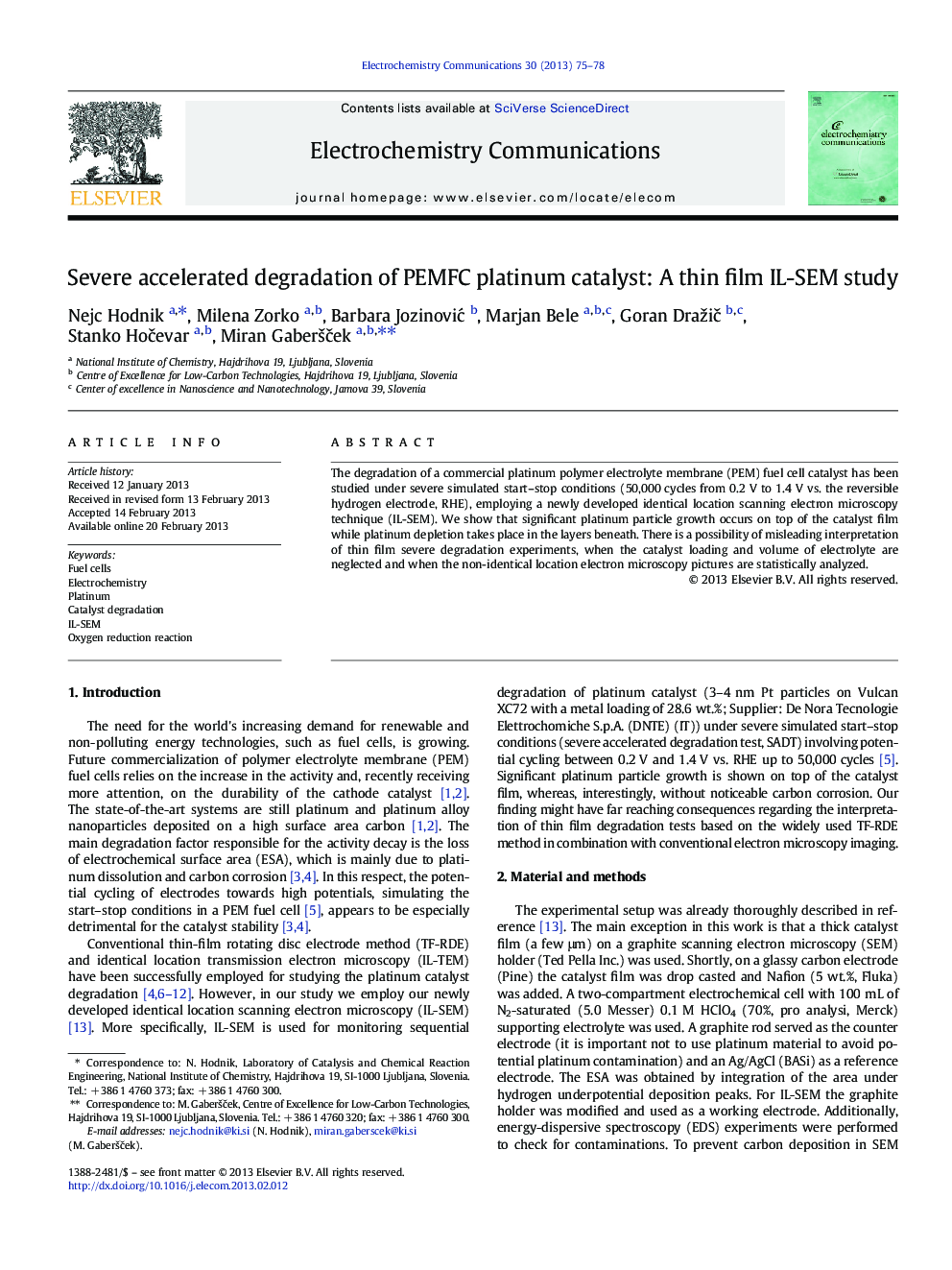| کد مقاله | کد نشریه | سال انتشار | مقاله انگلیسی | نسخه تمام متن |
|---|---|---|---|---|
| 179340 | 459345 | 2013 | 4 صفحه PDF | دانلود رایگان |

The degradation of a commercial platinum polymer electrolyte membrane (PEM) fuel cell catalyst has been studied under severe simulated start–stop conditions (50,000 cycles from 0.2 V to 1.4 V vs. the reversible hydrogen electrode, RHE), employing a newly developed identical location scanning electron microscopy technique (IL-SEM). We show that significant platinum particle growth occurs on top of the catalyst film while platinum depletion takes place in the layers beneath. There is a possibility of misleading interpretation of thin film severe degradation experiments, when the catalyst loading and volume of electrolyte are neglected and when the non-identical location electron microscopy pictures are statistically analyzed.
Figure optionsDownload as PowerPoint slideHighlights
► A new method of IL-SEM has been employed.
► Severe degradation of PEMFC platinum catalyst is shown by cycling to 1.4 V RHE.
► Large Pt particle growth on top of catalyst film is observed (Ostwald ripening).
► After about 2000 cycles there is a change in degradation rate constant.
► There is a possibility of misleading interpretation of thin film severe catalyst degradation data.
Journal: Electrochemistry Communications - Volume 30, May 2013, Pages 75–78